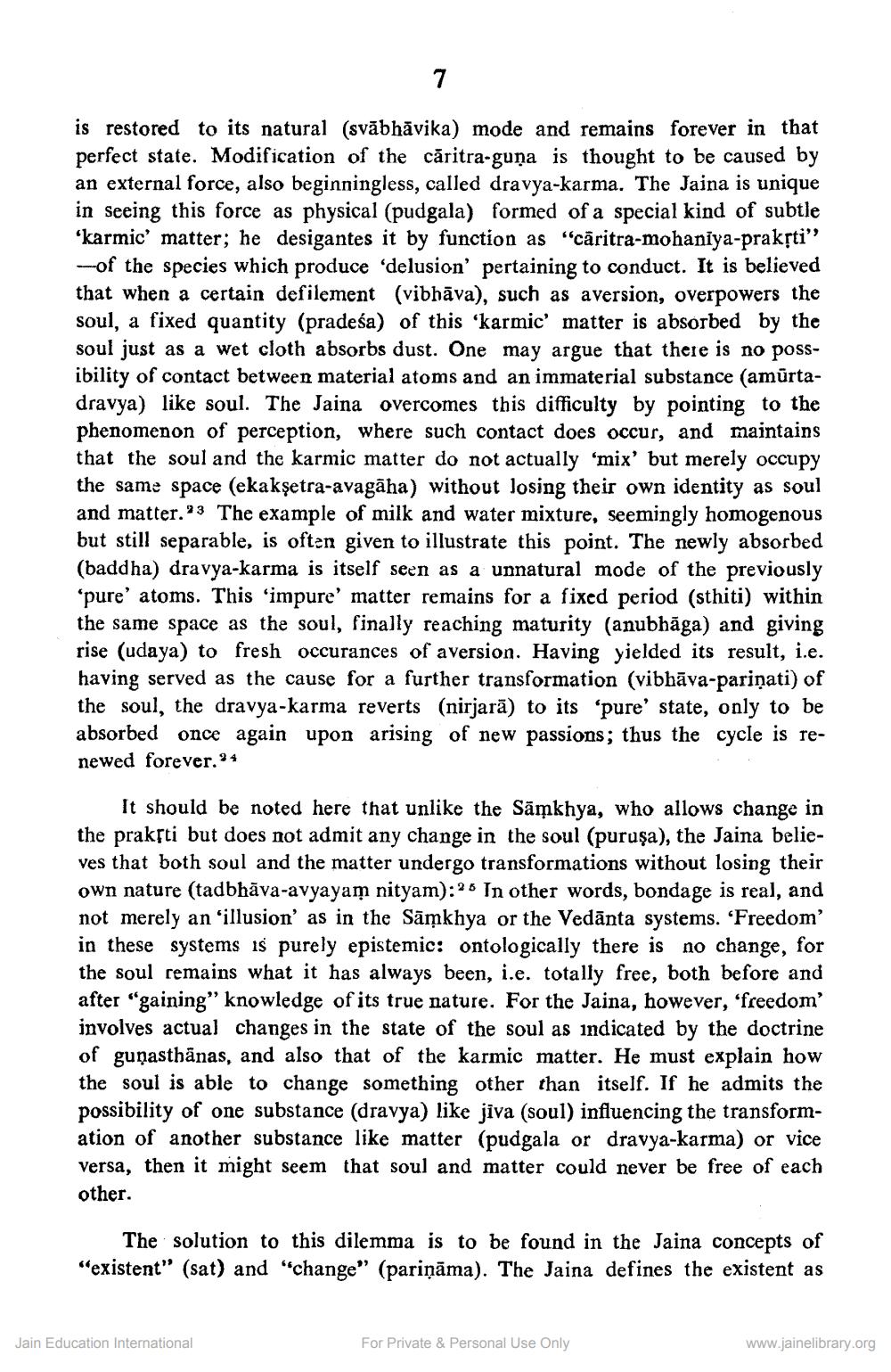________________
is restored to its natural (svābhāvika) mode and remains forever in that perfect state. Modification of the căritra-guna is thought to be caused by an external force, also beginningless, called dravya-karma. The Jaina is unique in seeing this force as physical (pudgala) formed of a special kind of subtle 'karmic' matter; he desigantes it by function as "cāritra-mohaniya-praksti"
-of the species which produce delusion' pertaining to conduct. It is believed that when a certain defilement (vibhāva), such as aversion, overpowers the soul, a fixed quantity (pradeśa) of this ‘karmic' matter is absorbed by the soul just as a wet cloth absorbs dust. One may argue that there is no possibility of contact between material atoms and an immaterial substance (amūrtadravya) like soul. The Jaina overcomes this difficulty by pointing to the phenomenon of perception, where such contact does occur, and maintains that the soul and the karmic matter do not actually 'mix' but merely occupy the same space (ekakşetra-avagāha) without losing their own identity as soul and matter. *3 The example of milk and water mixture, seemingly homogenous but still separable, is often given to illustrate this point. The newly absorbed (baddha) dra vya-karma is itself seen as a unnatural mode of the previously 'pure' atoms. This 'impure' matter remains for a fixed period (sthiti) within the same space as the soul, finally reaching maturity (anubhāga) and giving rise (udaya) to fresh occurances of a version. Having yielded its result, i.e. having served as the cause for a further transformation (vibhāva-pariñati) of the soul, the dravya-karma reverts (nirjarā) to its 'pure' state, only to be absorbed once again upon arising of new passions; thus the cycle is renewed forever. 94
It should be noted here that unlike the Sāmkhya, who allows change in the praksti but does not admit any change in the soul (puruşa), the Jaina believes that both soul and the matter undergo transformations without losing their own nature (tadbhāva-avyayam nityam):26 In other words, bondage is real, and not merely an 'illusion' as in the Sāmkhya or the Vedānta systems. 'Freedom' in these systems is purely epistemic: ontologically there is no change, for the soul remains what it has always been, i.e. totally free, both before and after "gaining" knowledge of its true nature. For the Jaina, however, 'freedom' involves actual changes in the state of the soul as indicated by the doctrine of guņasthānas, and also that of the karmic matter. He must explain how the soul is able to change something other than itself. If he admits the possibility of one substance (dravya) like jiva (soul) influencing the transformation of another substance like matter (pudgala or dravya-karma) or vice versa, then it might seem that soul and matter could never be free of each other.
The solution to this dilemma is to be found in the Jaina concepts of "existent" (sat) and "change" (parināma). The Jaina defines the existent as
Jain Education International
For Private & Personal Use Only
www.jainelibrary.org




